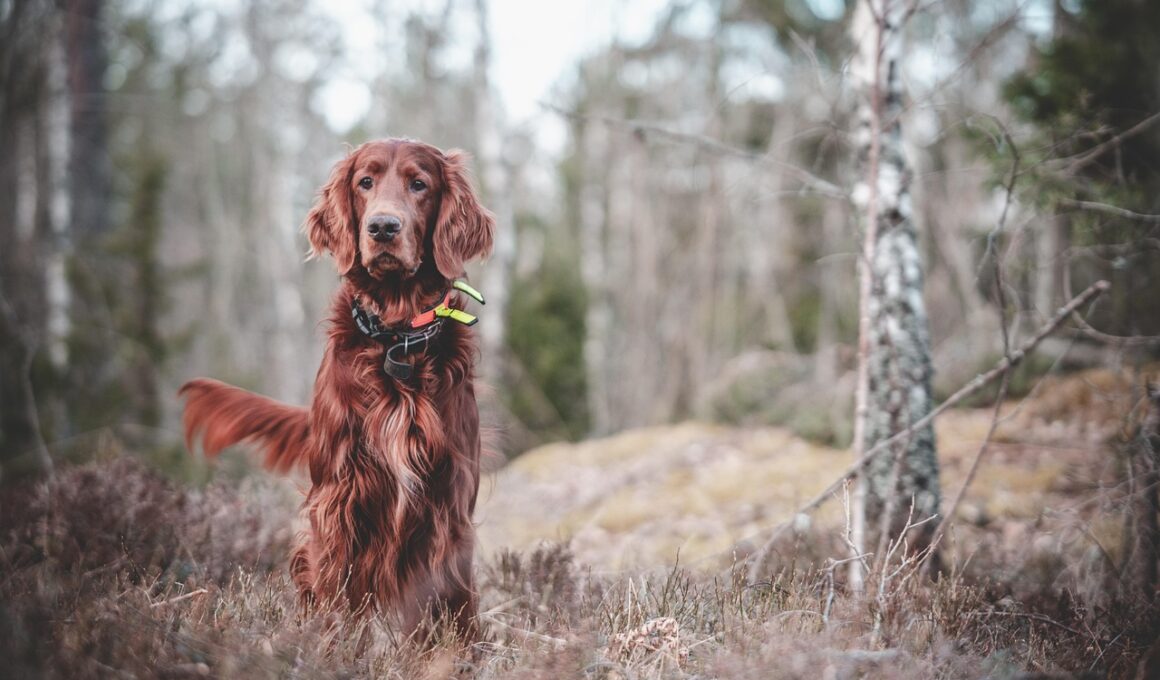Using Crate Training to Ease Train Travel
Traveling by train with your dog can be a rewarding experience, provided you prepare adequately. Crate training is a vital approach that can facilitate a stress-free journey for both you and your furry friend. Begin by introducing your dog to the crate at home. Ensure it is a comfortable and safe space by adding their favorite blanket and toys. Be patient during this process, as some dogs may take a longer time to adapt to being in a confined area. Gradually acclimate them by incorporating short periods of crate time during regular daily activities. This creates a positive association with their crate. Continually rewarding them with treats when they enter the crate willingly will reinforce this behavior. Choose a crate that meets the regulations of the train service you intend to use, ensuring it is well-ventilated. This will offer adequate comfort for your dog during travel. It’s essential to schedule several practice sessions leading up to the journey. This preparation will help alleviate anxiety for both ends. A well-crated dog contributes to a smoother trip, promoting safety and harmony in your shared travel experience.
Mark your calendar to practice crate training a few weeks before your scheduled train travels. Aim for consistent 10 to 15-minute sessions to help your dog adjust. Spend time rewarding them with treats when they spend time in the crate. This could involve feeding them their meals within the crate, turning it into their haven and safe space. Always allow your dog to exit the crate at their own pace; this prevents feelings of being trapped and creates positive connections. To further assist your dog in adapting to travel conditions, consider providing toys that can occupy them when they are crated. These entertaining elements can help distract them from the sounds of the train and the motion. Begin simulating the train environment by taking short trips in your car with the crate. Introduce the rattling noises similar to a train. This helps train their emotional response, reducing stress during the actual journey. Each successful trip can bolster their confidence, resulting in a more pleasurable travel experience. Encourage friends with dogs to join you on these outings, improving their socialization and making trips more fun.
Preparing for Your Train Trip
Careful preparation is crucial for enjoying a pleasant train trip with your dog. Start by researching your chosen train service’s pet policies thoroughly. Understanding their guidelines will help you avoid surprises and ensure your train travel is smooth. Some companies require advance reservations for dogs, as they may have a limited number of pet spaces. Moreover, familiarize yourself with any documentation required, which may include vaccination proof depending on the train service. This ensures you have everything organized before your adventure. Make a checklist of the essentials to bring along: food, water, medication, leash, waste bags, and a blanket. Having these items on hand will make your journey more efficient. During the trip, ensure you stay calm and composed. The temperament of your dog often reflects yours; remaining relaxed will help soothe your pet. Observe your dog’s body language during the ride and offer comfort when necessary. If they exhibit signs of stress, speaking softly or using soothing words can help alleviate their discomfort. Train travel should lead to positive memories, so appropriate preparations are essential in achieving this.
Managing your dog’s schedule during train travel is critical. Ensure they are well-exercised before the journey; a long walk can help burn off energy and encourage relaxation. This way, they are more likely to settle down in their crate than engage in excessive barking or restlessness during travel. Additionally, ensure your dog has had a bathroom break before boarding. This is essential for minimizing stress and discomfort. Portable water bowls can be incredibly useful during your journey. Always provide hydration for your dog, especially in warmer weather. Regularly check your dog’s comfort throughout the ride. Do they need to stretch or change positions? Noticing cues early will help address any discomfort promptly. Train cabins can occasionally be noisy, which may surprise some dogs. Be prepared with calming techniques, which may include special toys, blankets, or even speaking calmly to your pet when they seem anxious. Monitor their reaction as they acclimate to the environment. Each reassuring strategy you implement will promote positive feelings towards travel experiences in the future. Remember, the goal is to cultivate joyous train trips for both you and your furry companion.
During the Journey
Engaging with your dog during the journey is vital for maintaining their calmness and comfort. Consider occasionally spending time beside your dog’s crate on the train to offer reassurance. This interaction helps maintain their sense of security and shows that you are present to support them. Allowing your dog to see your face can greatly diminish their anxiety. Understand that your behavior and attitude greatly influence your pet’s tranquility. If you exhibit confidence with the situation, they will more likely mirror that attitude. Speak clearly and use a calm voice to encourage them when necessary. A favorite toy or chewable distraction can occupy them during the trip and divert their attention from any possible discomfort. Having familiar items on hand can ease transitional stress. Make short breaks at designated stops, if opportunities arise. Upon disembarking, give your dog ample time to stretch and relieve themselves. This is their opportunity to recalibrate after the journey. Reinforce this behavior by praising them for being calm, fostering a connection between positive behaviors and travel. This interaction not only strengthens your bond but transitions your dog into the post-travel phase comfortably.
Continuous monitoring of your dog’s health is imperative while traveling. Look out for any signs of discomfort or distress during the train journey. If your dog seems overly restless or barks excessively, they may be feeling anxious or stressed. Addressing these behaviors promptly can prevent escalation, ensuring you maintain an enjoyable travel experience. If medications or calming effects are necessary, consult your veterinarian beforehand. Some dogs benefit from prescribed calming agents specifically designed for travel. Ensure your travel bag includes essential medical supplies, such as a first-aid kit. This can include bandages, antiseptic, and any prescribed medications. Being prepared can address emergencies without much delay. Prioritize frequent hydration as well. In enclosed environments like trains, dogs might become dehydrated more rapidly, especially during warmer seasons. Offering water regularly makes them comfortable and healthy. Additionally, maintain a positive demeanor throughout the trip. Your dog will pick up on your energy; staying cheerful dispels tension. Travel time can also be taken as a positive bonding experience. Quality moments shared during train journeys can lead to cherished memories beyond the destination. These adventures enrich your relationship as you discover new places together.
Conclusion
Once your train journey concludes, prepare for your dog to readjust to the new environment or location. After exiting, allow them time to explore and settle into their surroundings. Ensure they have access to their comforts, including their favorite blanket and toys. Engage them in light activities to ease any residual energy from the trip. This can alleviate post-travel jitters, and it’s an opportunity to help them get acquainted with their new surroundings. Dogs thrive on routine, so reestablishing theirs as soon as possible is essential. Provide them with meals, hydration, and bathroom breaks. Observe how they interact with their surroundings. This will clarify further adjustments needed to ensure their comfort, especially in unfamiliar spaces. Offer rewards for calm behavior and engage in comforting activities. Setting these foundations can foster positive memories from the travel ordeal and influence future trips positively. Always remain attuned to how your dog feels during travel journeys. Fostering positivity reduces anxiety and increases the likelihood of pleasant future travels. Tailoring these experiences creates not only adventures but a loving partnership that can explore the world together.
This expanded approach lays the groundwork for a smooth train travel experience with your beloved dog. Train facilities provide various opportunities, and with the right preparation and attitude, your experiences can become cherished moments. Make use of crate training effectively and incorporate comfort and care practices, paving the way for enjoyable journeys that become the hallmark of your adventures together.


